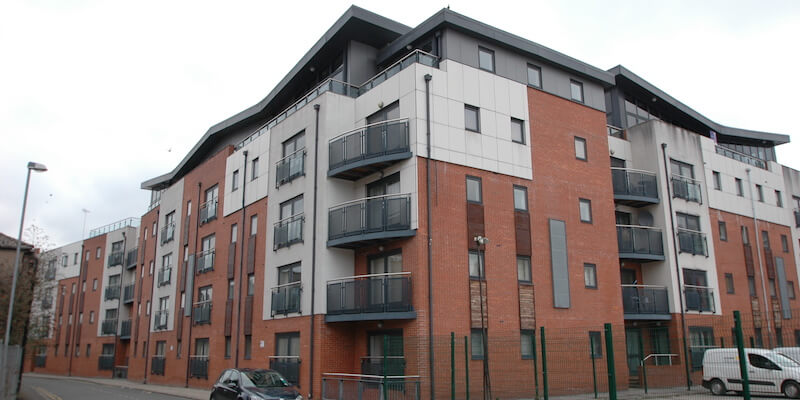Buildings are made to shelter and protect people and/or businesses. The majority are excellent at it, but buildings also need to be protected, just like their contents or occupants.
The outer layer, or envelope, of a structure, is one aspect of its exterior defence, and cladding is one material that is being employed for this purpose. Cladding is an addition to the exterior surfaces of your structure that provides thermal insulation, weather protection, and aesthetic improvements.

Image Credit: https://www.istockphoto.com/photo/unidentified-construction-workers-on-suspended-scaffolding-inspecting-installing-gm1213561009-352744896?phrase=Building%20Cladding
Regrettably, certain building cladding can be extremely dangerous, particularly when it comes to fire. This is due to the fact that some claddings are made of flammable materials that could contribute to the spread of fires and pose a serious risk to people’s safety.
This has happened in the past, such as during the tragic Grenfell fire. Therefore, it is imperative to get in touch with your cladding consulting service immediately, and have them evaluate your building for any kind of safety concerns. Their experts will inspect your building and advice you about the quality of the cladding of your building.
Aspects of Installing Cladding
- The external assembly of cladding is in the wet zone of your external wall.
- The cladding will act as a rain screen and deflect wind-driven rain away from your building.
- A breather layer will separate dry and wet zones and will be fitted behind the batten layer.
- Cladding is normally fitted over any ventilated top and bottom, drained and ventilated cavity, created using a series of battens. In the vertical arrangement, cladding needs a counter batten layer for creating the cavity.

Image Credit: https://www.istockphoto.com/photo/finishing-the-facade-of-the-building-with-a-ventilated-facade-a-fragment-of-a-gm1302474517-394205909?phrase=Building%20Cladding
Here are a few additional ways to make sure that your buildings have safe cladding:
1. Speak to your property manager
If you rent an apartment or live in a complex of residential units, you should be aware that you have the right to enquire about the safety of your building. You can inquire with the property management about the building’s security cladding.
2. Review local government regulations
The best course of action is to research relevant government regulations on structures and necessary risk assessments if you have sufficient knowledge about your building and the goods and materials used to construct it.
3. Replace all combustible material
Not all cladding materials are safe and fire-resistant. For everyone’s safety, talk to your inspectors or cladding contractors about the type of cladding your building already has and ask that it be replaced with a non-combustible material.
Due to recent events, many property owners are now required by legislation to ensure the security of their cladding. All around the UK, landlords and owners are making renovations. Many are still in the planning stages, but you must ensure that the cladding you use has complied with safety standards.
Conclusion
It is your obligation to understand whether the cladding on your building guarantees everyone’s protection or if you are, even accidentally, endangering their safety.
You can determine the best materials to employ to protect your building, the tenants, and your business by working with a reliable cladding contractor. To ensure safety, one must have a thorough awareness of the materials and the scenario.

